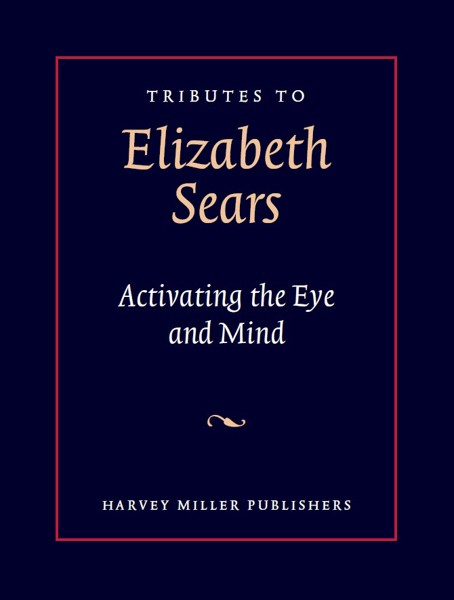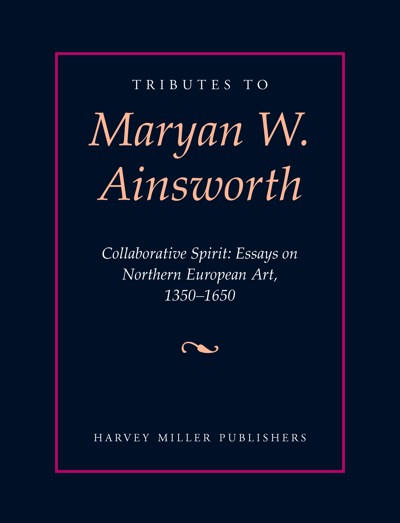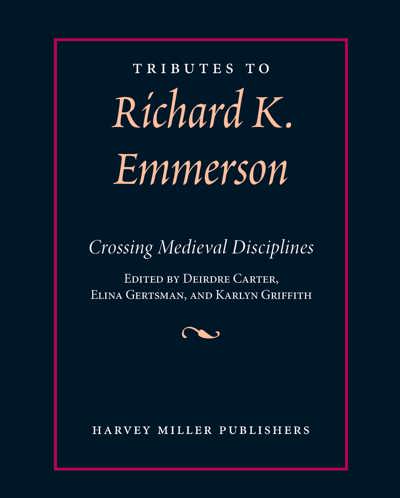
- Pages: approx. 187 p.
- Size:210 x 275 mm
- Illustrations:6 b/w, 66 col.
- Language(s):English
- Publication Year:2026
- € 50,00 EXCL. VAT RETAIL PRICE
- ISBN: 978-1-915487-05-6
- Hardback
- Forthcoming (Mar/26)
*How to pre-order?
Through a collection of essays by some of the most respected voices in the field, the volume provides a fresh look at the areas of art history that Professor Sears has done so much to shape, namely, the role of historiography in the study of art history, what it means to “read” and “interpret” images, the relation between cultures of learning and artistic endeavors, and the value systems by which art is produced.
A former student of Professor Sears, Heidi Gearhart is Assistant Professor of Art History at George Mason University and the author of Theophilus and the Theory and Practice of Medieval Art (Penn State Press, 2017).
For nearly four decades Elizabeth Sears has been an esteemed voice in the field of art history; her rich analyses, keen eye, and perceptive insights have shed new light on diverse areas of study, from Carolingian manuscripts, to Gothic ivories, to historiography. A dedicated teacher, generous colleague, and exceptional mentor, Sears has shaped younger scholars in the United States and abroad, and served the field in multiple capacities: as Editor of Gesta, chair of the ICMA publications committee, and member of the Executive Committee of the Medieval Academy of America. In addition to her numerous publications, her two most well-known books, The Ages of Man and Reading Medieval Images: The Art Historian and the Object, have introduced students to the rich world of medieval images, and to the methods with which they are discussed.
This volume celebrates Sears’ distinguished career. Through a collection of essays by some of the most respected voices in the field, the volume provides a fresh look at the areas of art history that Professor Sears has done so much to shape, namely, the role of historiography in the study of art history, what it means to “read” and “interpret” images, the relation between cultures of learning and artistic endeavors, and the value systems by which art is produced. The volume comprises three sections: manuscripts and medieval book culture, the movement of scholars and ideas and the ways in which scholarly interactions create new art historical methods, and medieval ideas of vision and perception.
Heidi C. Gearhart, Preface: Honoring Elizabeth Sears
Achim Timmermann, Publications by Elizabeth Sears
I. Thinking: Categories and Definitions in Medieval Art History
Paul Binksi, The Name of the Rose
Paroma Chatterjee, The Trouble with Antithesis
Robert A. Maxwell, Negotiating ‘Fausses Œuvres’
Kirk Ambrose, A Divergent Centaur on the Font at Bro
Helmut Puff, Speaking (of) Furniture: The ‘Wrangelschrank’ (1566)
Achim Timmermann, ‘You Will Offer a Ship of Silver’: A Brief History of Medieval Votive Ships
II. Seeing: Reading Medieval Manuscripts
Lucy Freeman Sandler, A Flying Book in the Bedford Hours
Elina Gertsman, Abstractive Image in Medieval Jewish Art
Elizabeth C. Teviotdale, Time in the Stammheim Missal
Beatrice Kitzinger, Crafting (and) Godesscalc’s Colophon
Ulrich Rehm, Seeing/Reading: Illuminators in Connection and Conflict with an Initial Letter in the Dover Bible
Kathryn A. Smith, Vanities and Verities: Reading Nebuchadnezzar’s Dream in the Welles-Ros Bible
Jacqueline Jung, The Pleasures and Perils of Women’s Agency in the ‘Büchlein von der geistlichen Gemahelschaft’
Megan McNamee, Writing Weaving in Nuremberg, c. 1500
III. Writing: Historiographical Studies
William Diebold, Bernward’s Hildesheim through the Ages: The Ottonians and Their Art in Gardner’s ‘Art through the Ages, 1926–2020’
Kathryn Brush, Between Manhattan and Ann Arbor: Arthur Kingsley Porter and Fiske Kimball on Colonial America
David Ganz, The Grand Master of our Order: Ludwig Traube, Mommsen and Warburg
Kevin Korsyn, Musical-Poetic Images in Schubert: David Lewin and Anthony Newcomb on Musical Meaning in ‘Auf dem Flusse’





